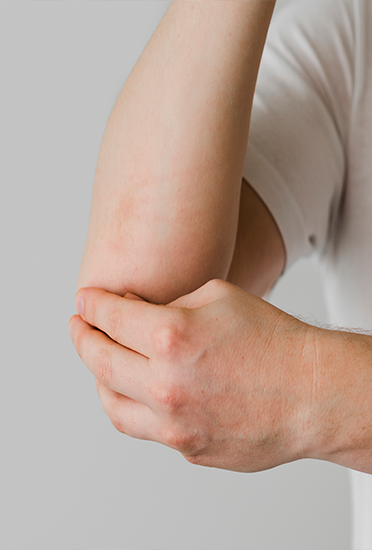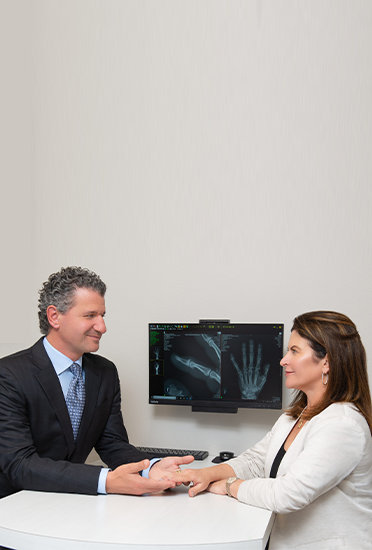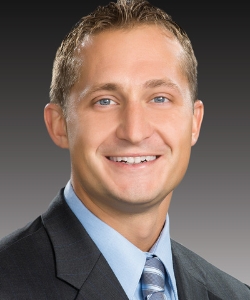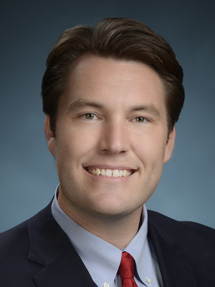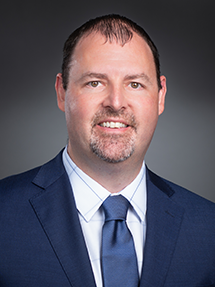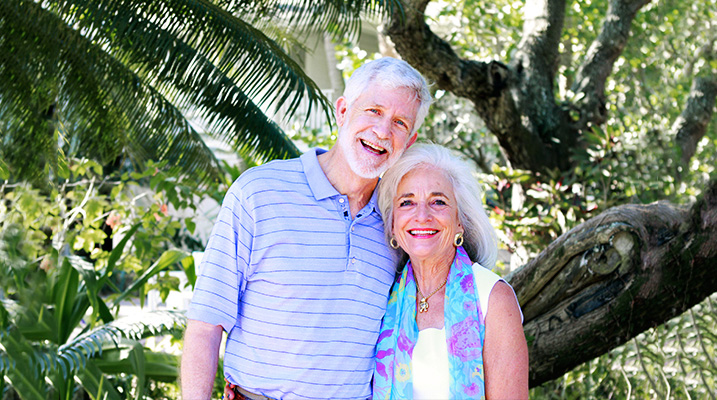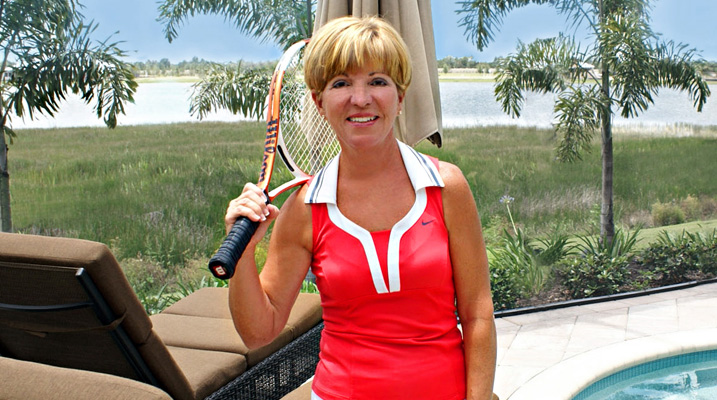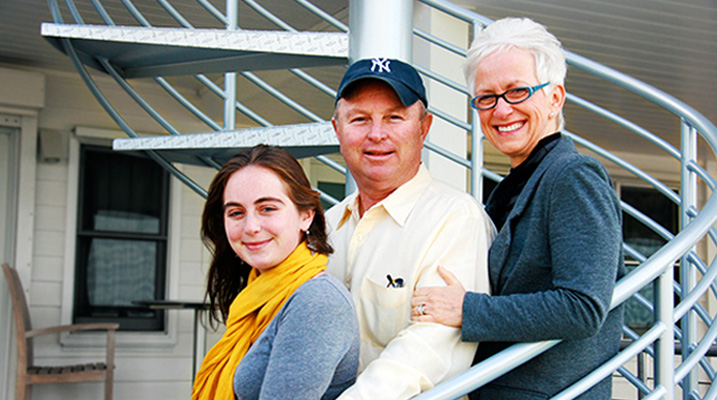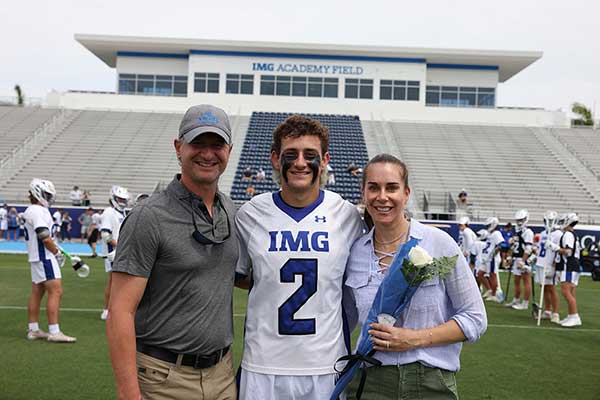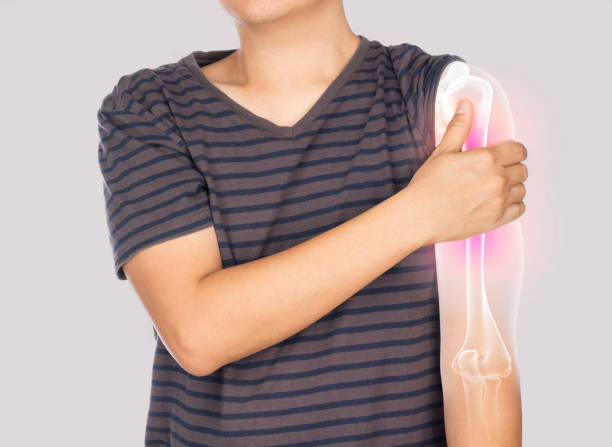Shoulder Fractures
Shoulder fractures are usually the result of an accident or injury, such as an auto accident, fall, or a hard football body hit. Fractures can also happen due to osteoporosis or arthritis, which weakens and degenerates the bone. The shoulder is a complex area of the body, and given its multiple parts, three types of shoulder fractures can occur. These are a clavicle fracture, proximal humerus fracture (humeral head), and a scapula fracture (comminuted scapula).
Clavicle Fracture – The clavicle is also known as the collarbone, which extends from the shoulder to the bottom of the throat. This type of fracture is painful and limits range of motion. It connects the shoulder blade to the breast bone (sternum).
Proximal Humerus Fracture – The humeral head is the “ball” that rests in the glenoid socket forming the glenohumeral joint of the shoulder. The humeral bone runs from the shoulder to the elbow. When the head is fractured in the proximal region, it can cause a great deal of pain and limit range of motion.
Scapular Fracture-The scapula is the bone in the back of the shoulder, also known as the shoulder blade. It’s a triangular-shaped bone that is the most uncommon type of shoulder fracture. However, it may require surgery due to the probability of other sustained injuries.
These fractures may start out as hairline fractures and progress over time. More complicated fractures are avulsion, growth plate, and compression fractures. These are painful. For example, an avulsion fracture is when a portion of bone connecting to a ligament or tendon rips away from the bone.
Dr. Sforzo and Dr. Dillingham specialize in minimally invasive techniques to repair shoulder fractures.
Continue reading for an overview of the shoulder fracture procedures, protocols, potential complications, and frequently asked questions.
Fractured Shoulder Symptoms
General Symptoms
- Pain
- Grinding sensation in shoulder
- Swelling and bruising
- Inability to move the shoulder or limited range of motion
- Appears deformed or misaligned
Scapula Fracture Symptoms
- Bump in collarbone
- Swelling of collarbone
- Some range of motion issues
Humeral Proximal Fracture Symptoms
- Severe pain and swelling
- Limited movement
- Bruised shoulder
Scapular Fracture Symptoms
Shoulder Fracture Diagnosis and Treatment
A physical examination will allow the surgeon to understand your shoulder fracture by performing a few tests and qualifying your pain level. It is imperative to have diagnostic imaging for a thorough evaluation and diagnosis. These include x-ray, CT scan, ultrasound, or MRI. Having a clear understanding of bone and soft tissue damage is critical for diagnosis and treatment planning.
Treatment also depends on where your fracture is located and how involved it is. Many shoulder fractures can be treated non surgically and heal quite well. If there are multiple fractures, or soft tissue injuries, or dislocated bones, these typically need to be treated with surgical intervention and fixation implants (plates, screws, rods).
If the bones are dislocated, fragmented, or shattered, surgery will be necessary. These can be fixed by placing plates and screws to bind the bones back together or to realign a dislocation. Surgery will also repair any soft tissue tears or issues.
How do you know if your shoulder is broken or dislocated?
There are some common symptoms that overlap with fractures and dislocations, so with physical examination, diagnostic imaging is absolutely essential. This will include an x-ray, CT scan, and/or an MRI to see details of the bone and soft tissue. However, with a dislocated shoulder, there will be other symptoms that are somewhat different from fractures.
If the AC Joint (Acromioclavicular Joint) is separated, the following symptoms are typical:
- Pain at the top of the shoulder
- Sensations of the shoulder sticking up
- A bump on top of the shoulder
If the Glenohumeral joint is dislocated, the following symptoms are common:
- Pain
- Bump at the front of the shoulder
- Arm is rotated outward
- Inability to move the arm
- Sensation of a “dead arm”
How should a burn be treated on a fractured limb?
If a patient undergoes an accident where they are burned and sustain fractures, a burn should be treated prior to treating the bone fracture. If the burn is significant, treating the skin is critical, and treating the fracture may be postponed or done with no casting or bracing to allow the skin to heal.
How to sleep comfortably with a fractured shoulder
Sleeping can be quite a task for those with a fracture. You should sleep on the side of the bed that your fracture is on. Propping yourself up with pillows and allowing your arm that has the fracture to hang down is ideal. This will provide the most protection and least force on your shoulder.
Many people find it most comfortable to sleep in an upright position. Resting your arm or elbow will push the shoulder up and together, which is not optimal for healing or comfort. Lying flat is not an option as it allows for movement in the bones as well. Even if you are in a cast, you must keep your arm free from the pressure of any kind.
Fractured Shoulder Recovery Exercises
Pendulum
Lean over and place one arm down on top of a table or hard surface. Hold your body with your palm on the table and the other arm hanging at your side. For counts of 10, Gently swing your arm back and forth, then side to side, then in small circles. Repeat these 3 to 5 times.
Cross Body Stretch
Standing straight up, gently stretch one arm across your chest, holding your opposite hand on your upper arm, and carefully hold for 30 seconds. Repeat on the other side and alternate for up to 10 times.
Forward Flexion
Sitting in a chair, place your hands on your thighs. Clasp your hands together and straighten your elbows. Gently try and raise your arms up in front of your torso. Keep your injured shoulder as relaxed as possible. Keeping your elbows straight, bring your arms back down. Repeat 10 to 20 times.
Wall Crawl/Walk-up
Standing slightly away from the wall, touch your fingertips to the wall out in front of you. Gently try and crawl your fingers upwards without shrugging. When you get to a tender spot, stop and breathe into the stretch as you relax your shoulder, then crawl back down to the starting position. Repeat these 3 to 5 times, but do not over-stretch the shoulder.
Shoulder Shrug
Standing with feet hip-distance apart. Hold a lightweight in each hand and let your arms hang gently at your sides. Shrug your shoulder up as far as you can, and then relax your shoulders back down. Repeat 10 to 20 times.
Many of our patients are treated successfully with non-surgical treatment and physical therapy, which is available in the convenience of our office. Your physical therapists will work directly with our surgeons to create and implement a safe and effective program for you to do in the office and at home.
If you have a fractured shoulder or symptoms of shoulder pain, it’s imperative to see a surgeon that is board-certified, fellowship-trained with extensive experience.
With decades of experience, the board-certified, fellowship-trained surgeons at Sforzo | Dillingham | Stewart Orthopedics + Sports Medicine offer you the best treatment options and care.
Our commitment to our patients is to provide excellent medical care in a warm and caring environment. Most importantly, allowing time with the doctor to have questions and concerns addressed. Let us get you back in your game.


